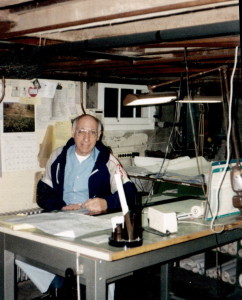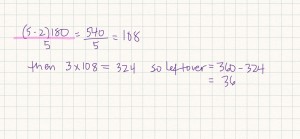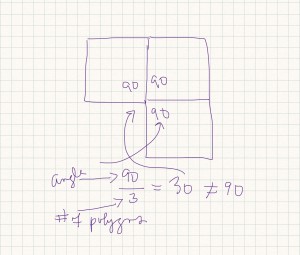I am not really a negative blogger but I do have to say how tired I am of research reports that over and over again talk about the way we are not doing enough to support girls in math education (or other underrepresented populations of students). There is enough evidence now from many research reports (NCTM, 2016, Why so few? AAUW, 2010, Riegle-Crumb, et al, 2012 I could go on…) that show that there is little difference in math ability by gender and that the reasons that girls and women choose to leave STEM fields are culturally related. And yet, we still need a white male to make statements like:
“I believe that this issue of women’s confidence is cultural, not biological. It fits in with all we know about stereotype threat. When the message is that women are not expected to do as well as men in mathematics, negative signals loom very large. Calculus—as taught in most of our colleges and universities—is filled with negative signals.”
- David Bressoud, MAA Blogpost, Launchings, October 1, 2016
Now, I don’t know Mr. Bressoud and perhaps this most recent research study really pushed him over the edge to being a believer, so no offense meant. But I’ve just had enough of it. My life experience had been based on all of this and it’s enough for me.
We need to do more to change the way math is taught in the U.S. so that more girls (and other underrepresented students) feel connected and desire learning, feel like they belong and their ideas and voices are valued within the context of mathematics and the community of mathematics learning – at the secondary level and the college level. Period.
Here is the introduction to my dissertation, “Dismantling the Birdcage: Adolescent Girls’ Attitudes towards Learning Mathematics with a Relational Pedagogy in a Problem-Based Environment” (2013) (don’t feel the need to read the whole thing).
“If you look very closely at just one wire in the cage, you cannot see the other wires…You could look one wire up and down the length of it, and be unable to see why a bird would not just fly around the wire any time it wanted go somewhere…There is no physical property of any one wire…that will reveal how a bird could be inhibited or harmed by it except in the most accidental way. It is only when you step back, stop looking at the wires one by one and take a macroscopic view of the whole cage, that you can see why the bird does not go anywhere; and then you will see it in a moment. It is perfectly obvious that the bird is surrounded by a network of systematically related barriers, no one of which would be the least hindrance to its flight but which by their relations to each other, are as confining as the solid walls of a dungeon”. (p.5)
-Marilyn Frye, Oppression, in The Politics of Reality (1983)
I will begin with a story. It is the story of a young girl excited and interested in learning and doing in all aspects of her elementary education. Luckily, her parents were always encouraging and supportive of her learning goals and her initial schooling included “enrichment” class for which she was chosen to receive out-of-class group instruction in advanced topics – including mathematics and science. The girl was confident, motivated and eager to move forward in her exploration of new topics and share these ideas with her friends and family. As middle school approached, it became clearer to the girl that categorizing students by ability became more important and she realized that her work and grades in her classes, as opposed to her interest in mathematics, would begin to determine her path through her education. The pressure of this realization, and possibly other determinants, affected her performance and she was placed in a pre-algebra course in the eighth grade, which she knew, even then, would set her on a trajectory that somehow indicated less success.
However, the following year, the girl’s work in algebra was so successful that her teacher that year recommended that this adolescent girl now double-up in her mathematics courses and take geometry and a second year algebra course concurrently. Reinvigorated and more confident in her abilities, she regained her momentum and faith in herself as a mathematics student, although the fun with her peers and connections with the teacher from her “enrichment” classes were now a thing of the past. Mathematics seemed made up of a set of disjointed courses that needed to be passed sequentially in order to fulfill the requirements for graduation.
Finally, the ultimate course in mathematics came during her senior year of high school where she would be able to truly show that she had made it to the top – Advanced Placement Calculus. However, difficulties arose when little interaction occurred between the teacher and the students surrounding mathematics in the classroom. Utilizing a textbook that was published almost 25 years earlier, the now young woman felt isolated and alone in a class where asking questions seemed to signify weakness and demanding an explanation also showed that a student was incompetent. Students who could easily and quickly replicate the mathematical exercises performed by the teacher were praised and favored whereas those with difficulties were dismissed and even asked not to take the Advanced Placement exam at the end of the year. Sadly, our young lady was among those disinvited to be part of the elite exam takers. This was a turning point in her desire to continue with mathematics as an intellectual endeavor. She vowed to never take a math class again and moved on to college to pursue music as a major field of study.
On arriving at her chosen college in the fall, the young woman was required to take a mathematics placement exam in order to fulfill her natural science portfolio requirement. Begrudgingly, she took the short test and a few days later she was told she could register for Calculus III. How was this possible? She did not even take the AP exam in May and barely passed the course in high school. Would this roller coaster ride of messages of encouragement and discouragement ever end? Who did they think were, telling her to move into Calculus III? She would show them and just retake Calculus I and be done with it – get that natural science requirement out of the way and move onto much more interesting and meaningful courses so that she could leave mathematics in the dust.
However, something surprising happened in that basic Calculus I course that fall. The young woman had an interested professor that saw her potential and talents. The professor engaged her in conversation about mathematical justification and questioning. Citing the young woman’s exceptional ability in Calculus, the professor questioned why she was even in the class. At the end of the term, the professor had convinced the young woman to continue on and even elect to take a computer programming course to see if she liked it. “Why not?” the professor said, “and it’s required just in case you decide to be a math major someday.” The young woman laughed out loud.
One by one mathematics courses came and went. The smaller seminar style of the upper level mathematics electives worked extremely well for her learning style. Although she was often one of two, or the only female in the course, the girl believed that she was supported and encouraged by the professors she met. There was a community of mathematicians who allowed her to grow and develop her skills, as opposed to suppress and discourage them. Abstract courses like Linear Algebra, Number Theory and Topology connected much of the mathematics that for too long seemed discrete and disconnected. After serving as a teaching assistant for much of the department and receiving honors on her senior thesis, the girl was encouraged to apply to graduate programs.
In graduate school, once again the girl found isolation among a male-dominated community of academics and senior mathematics professors seemed to look differently at her, wondering why she was not in the Master of Arts in Teaching program with the women. After two years of struggling with the environment, but quite enjoying and thriving in the teaching classroom, the young woman realized her gift and decided to find a way to make her journey complete. Combining her love of mathematics and her talents for teaching was the way to make a life worth living while also bringing the consistent support and encouragement to students that she so greatly needed all those years. Although it took her 20 years to realize this direction, ultimately it became a passion and lifelong commitment.
At this point in stories like these it is generally tradition to state “The End.” However, at this point, I would change the phrase and say “The Beginning.” Yes, it was just this story that has led me to this place and passion in my research for gender equity in mathematics education. Now, 22 years into my teaching career I can look back and see how it began with this personal experience, but when I started my teaching and my doctoral program, I am not sure I was as aware of the implications my own story had for my research and teaching interests. As my career brought me in and out of single-sex schools, my research interests led me towards a relational pedagogy. As individual students that I crossed paths with shared their own hopes and fears about their relationship with mathematics, it began to be clear to me that it was more than a coincidence that my dissertation research, and perhaps my life’s work, would be centered around finding ways to improve the education of marginalized students in mathematics education, if possible.
And so it was the beginning – the beginning of a long journey with this question about how it might happen – how to improve the learning of students who feel marginalized in the world of mathematics as I once did. But I would begin with one group of marginalized students in the mathematics classroom to whom I could relate most readily; adolescent girls.





